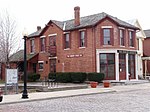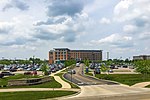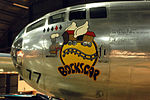Air Force Institute of Technology
1919 establishments in OhioAir Force Institute of Technology alumniAir University (United States Air Force)Education in Montgomery County, OhioEngineering universities and colleges in Ohio ... and 8 more
Military education and training in the United StatesMilitary units and formations in OhioNaval Postgraduate SchoolStaff collegesUniversities and colleges established in 1919Universities and colleges in Dayton, OhioUse American English from March 2019Wright-Patterson Air Force Base

The Air Force Institute of Technology (AFIT) is a postgraduate institution and provider of professional and continuing education for the United States Armed Forces and is part of the United States Air Force. It is in Ohio at Wright-Patterson Air Force Base, near Dayton. AFIT is a component of the Air University and Air Education and Training Command.
Excerpt from the Wikipedia article Air Force Institute of Technology (License: CC BY-SA 3.0, Authors, Images).Air Force Institute of Technology
Hobson Way, Bath Township
Geographical coordinates (GPS) Address Nearby Places Show on map
Geographical coordinates (GPS)
| Latitude | Longitude |
|---|---|
| N 39.783 ° | E -84.083 ° |
Address
Air Force Institute of Technology
Hobson Way
45431 Bath Township
Ohio, United States
Open on Google Maps








